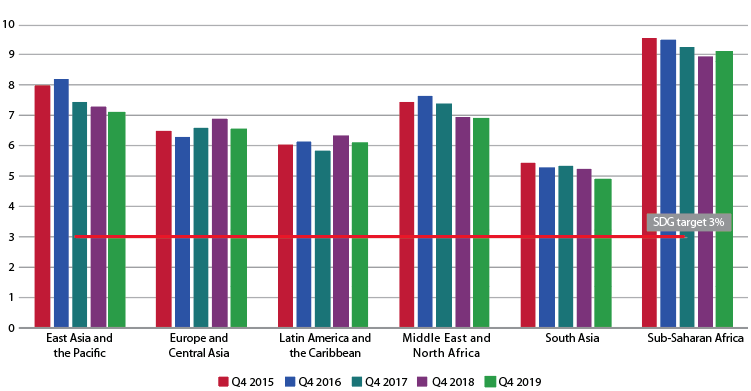Remittances are multidirectional, voluntary, and private international monetary transfers from migrants to their families and contacts in their countries of origin.
The Addis Ababa Action Agenda pledges to facilitate the flow of remittances and commits to:
- Reduce the average transaction cost of migrant remittances by 2030 to less than 3 per cent of the amount transferred; and to ensure that no remittance corridor charges higher than 5 per cent by 2030, while maintaining service coverage
- Work to ensure that affordable financial services are available to migrants in home and host countries; to reverse the trend of banks withdrawing services; to increase coordination among national regulatory authorities to remove obstacles for non-bank remittance providers; to promote competitive and transparent market conditions
- Exploit new technologies and improve data collection
Latest developments
Global flows of remittances—mainly wages that migrant workers transfer to their families—are projected to have reached $707 billion in 2019, a nominal increase of 3.5 per cent from 2018. The average cost of sending $200 dollars has continued to stagnate at about 7 per cent since the end of 2017 across all regions, well above the 3 per cent target in the 2030 Agenda for Sustainable Development and the Addis Ababa Action Agendas. This has a large impact on receiving families, as each percentage point in transaction costs deprives them of about $5.5 billion per year.
The costs, however, vary substantially across remittance corridors. According to the World Bank’s indicator for the cheapest available transfer options, 60 per cent of all remittance corridors had options costing less than 5 per cent of the transfer amount at the end of 2019. By contrast, the cost of transfers remains particularly high in sub-Saharan Africa, at about 9 per cent on average.
Average total cost for sending $200, by region, 2015–2019
(Percentage)

Source: World Bank, Remittance Prices Worldwide.
Relevant SDG indicator